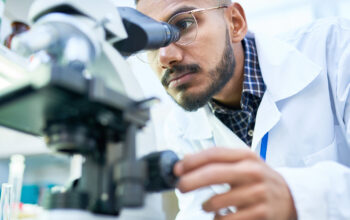By 2050, superbugs may cost the economy $100 trillion
This oped was first published in the Antimicrobial Resistance campaign in the Guardian on 12 November 2018
Antimicrobial resistance (AMR) is on course to overtake cancer and account for 10m deaths a year by 2050. Already, 700,000 people die from drug-resistant infections (“superbugs”) each year. AMR could cost the global economy up $100 trillion – and push 28m more people into poverty.
The life-science industry – research-based, generics, biotech and diagnostic companies – is researching solutions to avoid medical progress being thrown back to the dark ages as AMR continues to undermine treatments for infectious diseases. A new coalition of over 100 such companies, the AMR Industry Alliance, is uniquely collaborating in this fight.
Getting it right
This involves preserving the efficacy of existing antibiotics and developing new ones. So far, AMR Industry Alliance says companies have invested at least $2 billion in 2016 in R&D to counter AMR. A 2017 report commissioned by the German government estimates that governments have given $500 million for R&D for new antibiotics. As of June 2018, four new antibiotic drug applications have been submitted and 42 new antibiotics with the potential to treat serious bacterial infections are in clinical development. But this is not enough. The report recommends the development of one new high-need antibiotic a year. This is a very big ask, given the fragility of the market and the lack of robust incentives.
Incentives for innovation
Thankfully, a global consensus has emerged, agreeing that AMR requires concerted collaboration to provide incentives for innovation to achieve an impactful long-term change on the pipeline of new products and strengthen patients’ access to the appropriate treatments.
Incentives are needed to overcome the challenge of high-risk investments that are difficult to sustain under the current conditions where new antibiotics will remain on the shelves as reserve and for use as a last resort, meaning there is very limited and unpredictable economic return on these products. Incentives can also address the problem that antibiotics are generally undervalued by reimbursement systems relative to the benefits they bring society.
Cutting-edge diagnostics
Diagnostics play a key role for the optimal diagnosis of a patient, for the optimal cost-efficient functioning of healthcare systems, and for the benefit of public health.
They guide the effective use of antibiotics by identifying the infectious agent, as well as any potential resistance to antibiotics, in order to help clinicians prescribe the most appropriate treatment with the shortest time delay. They also reduce inappropriate use while helping to ensure that existing drugs remain effective. They are crucial to implement informative and effective AMR surveillance systems which collect and analyse important information for the identification of trends in pathogen incidence and resistance in countries or regions,. Novel methods such as molecular syndromic testing can provide rapid and accurate results for many different pathogens all at the same time, maximizing patient health outcomes, saving time and money and avoiding repeated testing. New diagnostics adapted to the low and middle income countries are also urgently needed.
But to accelerate effective innovation from biotechs, diagnostics firms and R&D pharma companies, governments need to implement new, alternative market structures that provide more dependable and sustainable market models. The present market is fragile so there is an urgent need to act. Fundamental changes are needed to encourage R&D efforts towards novel diagnostics and therapeutics, to simplify and facilitate market access of innovative health products and to develop educational and communication programs around AMR for health workers as well as the general public.
Author






